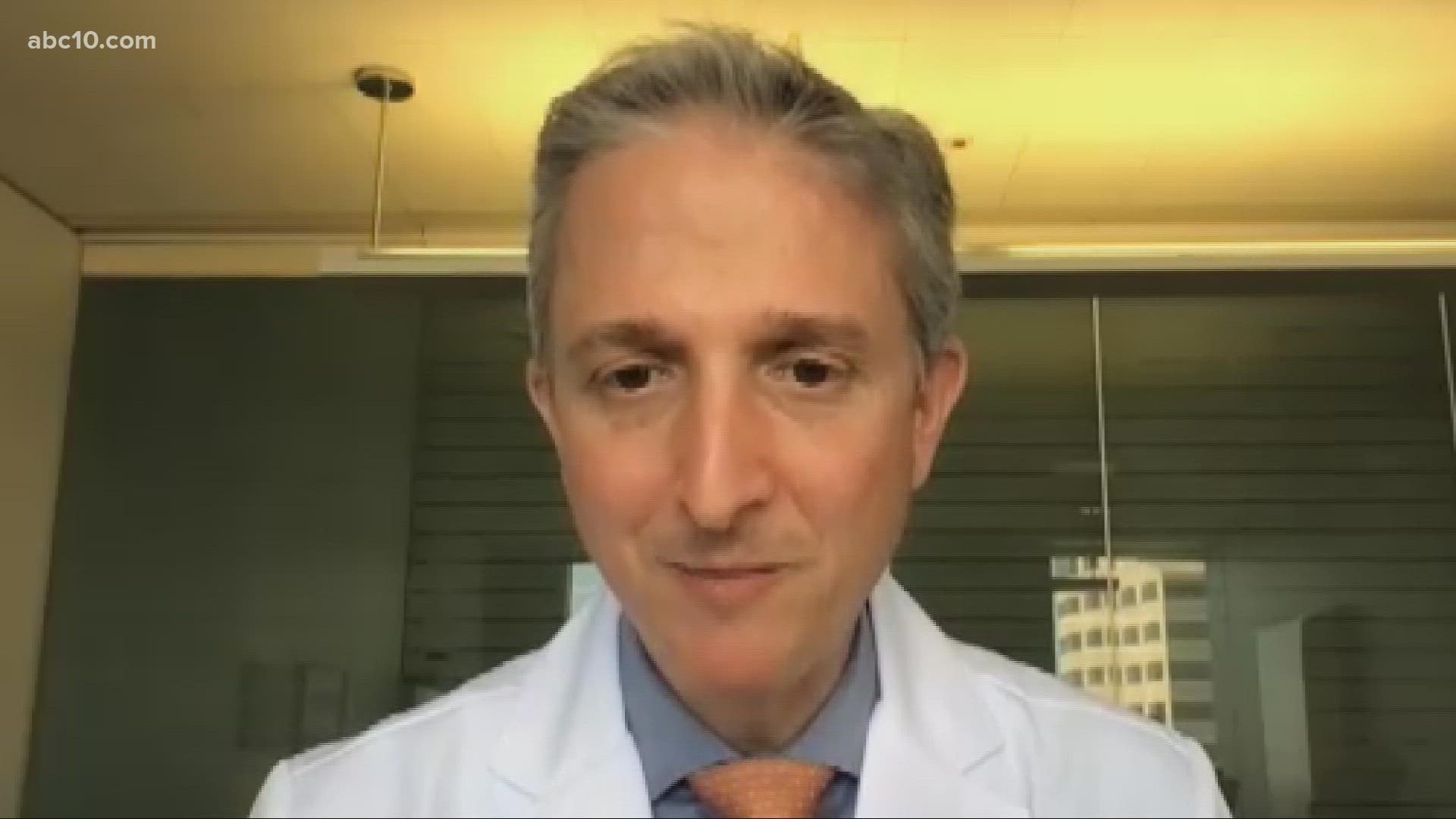SACRAMENTO, Calif. — California – like most places in the U.S. – is seeing a steady decrease in new daily COVID-19 cases. That has health experts talking about something called an 'endemic' stage of the virus.
The word ‘endemic’ is used to describe a disease that settles into a population at a stable case rate and – while it doesn’t go away – can become more manageable and more a part of everyday life.
“I hope that it ends up looking like the way we treat influenza,” said infectious disease specialist Dr. Stephen Parodi, clinical lead for Kaiser Permanente’s coronavirus response.
"We're not quite there yet in terms of being at an endemic state,” Parodi said. “The good news is that Northern California is starting to see a downturn. The hope is that over the next couple of months, we will get to an endemic state, which basically means we're at a stable level of infection in the community."
So how and when do we get to a point when COVID-19 becomes endemic?
UC Berkeley Epidemiologist Dr. John Swartzberg said, “It’s going to be a process that will take several months, but we're going to get there.”
He added that’s as long as no new variant emerges that’s worse than the ones we’ve already seen. But the omicron variant has infected a lot of people—so that fact, paired with the vaccination rate – means immunity is high.
“In the early spring and later spring, we're going to be dealing with a period of relatively highly immune population - much higher than we've ever had throughout the pandemic, and a disease level that's much lower than where we are right now,” Swartzberg said.
The high immunity plus increasingly available testing and better treatments could put a dent in COVID-19’s impact this spring, he said.
“And then what's going to be also critically important is that, hopefully in the next month or so, 6-month-olds to 5-year-olds are going to have the opportunity to get vaccinated,” Parodi said. “It's going to be important that in order to protect households, protect schools, preschools-- that all those children get vaccinated.”
In order to talk about the end of the COVID-19 pandemic, it helps to talk about the beginning. Any pandemic begins as an epidemic, which is a disease that’s spreading quickly in a local region. An epidemic can then grow into a pandemic, which is when the disease spreads over a much larger area—say, an entire country, continent or, as in the case of COVID-19, the world. That becomes endemic once the case rate becomes stable, although as both doctors point out, it can be stable and high, which is what they want to avoid with COVID-19.
“We want it down really low,” Swartzberg said. “We should really be saying we're heading towards an endemic disease pattern, and our goal is to get it to be a very low endemic disease pattern. That's critical. A really high pattern is not going to be good for anybody.”
The conversation about ‘endemic’ versus ‘pandemic’ versus ‘epidemic’ is a hot topic right now. Dictionary.com recently published an article about the differences between the three words. You can check that out HERE.
WATCH ALSO:

















